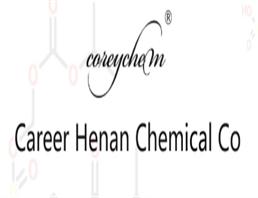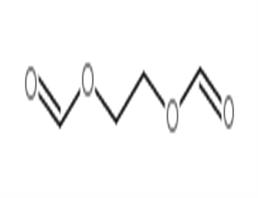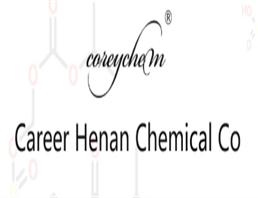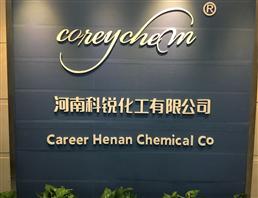
SGI-1776
| Price | $1 |
| Package | 1g |
| Min. Order: | 1g |
| Supply Ability: | 1ton |
| Update Time: | 2020-01-13 |
Product Details
| Product Name: SGI-1776 | CAS No.: 1025065-69-3 |
| EC-No.: 200-258-5 | Min. Order: 1g |
| Purity: 95-99% | Supply Ability: 1ton |
| Release date: 2020/01/13 | |
| contact: Mary@coreychem.com |
▼
▲
Common Name
SGI-1776
CAS Number
1025065-69-3
Molecular Weight
405.417
Density
1.4±0.1 g/cm3
Boiling Point
N/A
Molecular Formula
C20H22F3N5O
Melting Point
N/A
MSDS
N/A
Flash Point
N/A
▼
▲
Use of SGI-1776
SGI-1776 is an inhibitor of Pim kinases, with IC50s of 7 nM, 363 nM, and 69 nM for Pim-1, -2 and -3, respectively.
▼
▲
Name
N-[(1-methylpiperidin-4-yl)methyl]-3-[3-(trifluoromethoxy)phenyl]imidazo[1,2-b]pyridazin-6-amine
Synonym
More Synonyms
▼
▲
Description
SGI-1776 is an inhibitor of Pim kinases, with IC50s of 7 nM, 363 nM, and 69 nM for Pim-1, -2 and -3, respectively.
Related Catalog
Signaling Pathways >> Autophagy >> Autophagy
Signaling Pathways >> JAK/STAT Signaling >> Pim
Research Areas >> Cancer
Target
Ki: 7 nM (Pim-1), 363 nM (Pim-2), 69 nM (Pim-3)[4]
In Vitro
SGI-1776 (2.5, 5 μM) inhibits Pim-1 protein expression and Pim-1 kinase activity in SACC cells. SGI-1776 (2.5, 5 μM) causes cell cycle arrest and reduces cell proliferation in SACC-83 and SACC-LM cells. SGI-1776 (5 μM) inhibits cell migration and invasiveness in both SACC-83 and SACC-LM cells. SGI-1776 (0, 2.5, or 5 μM) induces apoptosis via Caspase-3 activation[1]. SGI-1776 (5 µM) exerts inhibitory effects on both lipid accumulation and TG synthesis without affecting the number of adipocytes. SGI-1776 (5 µM) inhibits adipogenesis particularly at an early phase of differentiation. SGI-1776 (5 µM) decreases the expression of C/EBP-α and PPAR-γ and the phosphorylation levels of STAT-3 during adipocyte differentiation, and downregulates the protein and/or mRNA expression of FAS, leptin and RANTES during adipocyte differentiation[2]. SGI-1776 shows the significant activity against HO-8910 cells in a dose-dependent manner, with IC50 of (5.2±0.6) µM, and the inhibiting effect of SGI-1776 is sharply increased from 1.25 µM to 20 µM in vitro. SGI-1776 inhibits the migration and invasion of HO-8910 cells in a dose-dependent manner, and the inhibiting migration and invasion rate of 5 µM. SGI-1776 (2.5, 5 and 10 µM) decreases Pim-1 kinase activity of HO-8910 cells in a dose-dependent manner. Furthermore, the down-regulation of Pim-1 expression by SGI-1776 significantly inhibits cell viability, arrests cell in G1 phase, and inhibits the migration and invasion[3].
In Vivo
SGI-1776 (75, 200 mg/kg, p.o.) shows potent and sustained antitumor activity in a dose dependent manner in MV-4-11 xenografts[4].
Kinase Assay
SACC-83 and SACC-LM cells of 0 μM, 2.5 μM and 5 μM groups after SGI-1776 exposure are harvested. 6 samples of SACC cells are diluted in Kinase buffer and pipetted into the wells which is pre-coated with a substrate corresponding to recombinant p21waf1. It contains threonine residues that can be efficiently phosphorylated by Pim-1. After undergoing the procedure, measure absorbance in each well is quantitated by spectrophotometry at dual wavelengths of 450/540 nm. It reflects the relative amount of Pim-1 activity in the 6 groups of SACC cells.
Cell Assay
Cells are seeded in a 96-well plate at a density of 5 000 cells/well. After incubation for 24 h, different concentrations of SGI-1776 (0.625, 1.25, 2.5, 5, 10, 20, 40 µM) are added to each well and cultured for 48 h. The medium is removed and then incubated with 5 mg/L MTT for 4 h. Next, the supernatant is removed after centrifugation. Finally, 100 µL of DMSO is added and an absorbance at 570 nm wavelength (A570) is measured by enzyme-labeling instrument. Relative cell proliferation inhibition rate (IR)=(1-average A570 of the experimental group/average A570 of the control group)×100%.
Animal Admin
The conditions for animal room environment and photoperiod are 20-25°C, 40%-70% humidity, and 12 hours of light/12 hours of dark cycle. Each mouse is inoculated subcutaneously at the right flank with MV-4-11 tumor cells (5×106). The treatments start when the tumor size reach 80-150 mm3. Mice are randomized to treatment groups based on their tumor sizes; tumor size is measured in 2 dimensions using a caliper, and the volume is expressed in mm3 using the formula: V = 0.5 a × b2 where a and b are the long and short diameters of the tumor, respectively. Pretreatment randomization ensures that each group has approximately the same mean tumor size. Mice are treated with vehicle (5% dextrose), SGI-1776 or cytarabine (ara-C). SGI-1776 and ara-C are formulated in 5% dextrose. SGI-1776 is administered by oral gavage (PO) on a daily × 5/week or twice/week schedule; ara-C is administered by intraperitoneal injection 3 times/week for 3 consecutive weeks. Animals are euthanized when their measured tumor size is greater than 3000 mm3 or when they lose ≥ 20% initial body weight; if the body weight loss ≥ 15%, treatment is stopped at first until mice regain body weight. Mice are euthanized when body weight loss is still ≥ 20% even after stopping treatment. T/C value (in %) is an indication of antitumor efficacy, where T and C are the mean tumor volume of the treated and control groups, respectively, on a given day. The differences between the mean tumor sizes for comparing groups is analyzed using the ANOVA test, where P ≤ 0.05 is considered to be statistically significant.
References
[1]. Hou X, et al. Biochemical changes of salivary gland adenoid cystic carcinoma cells induced by SGI-1776. Exp Cell Res. 2017 Mar 15;352(2):403-411.
Company Profile Introduction
Established in 2014,Career Henan Chemical Co. is a manufacturerspecializing in the sale of fine chemicals.
Mainly deals in the sales of:
Pharmaceutical intermediates
OLED intermediates:
Pharmaceutical intermediates;
OLED intermediates;
You may like
Recommended supplier
| Product name | Price | Suppliers | Update time |
|---|
- Since: 2014-12-17
- Address: Room 702, Floor 7, Building 10, National University Science Park, High-Tech Zone, Zhengzhou City, H
INQUIRY







 China
China